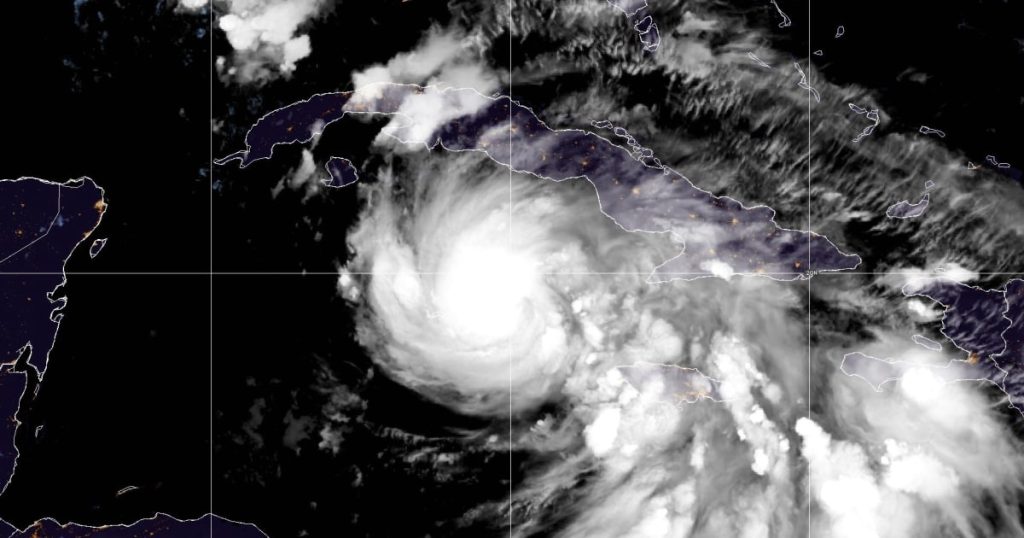Rafael made landfall as a Category 3 hurricane in western Cuba before weakening to a Category 2 hurricane with maximum sustained wind speeds of 105 mph. The storm caused the collapse of Cuba’s national electric grid, leaving its 10 million residents without power. It is expected to approach the U.S. later in the week, with potential for life-threatening storm surge, damaging winds, and flash flooding. The storm is projected to move northwest away from Cuba initially, followed by slower movement to the west-northwest as it traverses the Gulf of Mexico. Although its strength may not change significantly, Rafael continues to pose a threat to areas in its path.
In Cuba, Mariel reported sustained winds of 80 mph and peak gusts of 115 mph as the eye of the storm passed nearby. The National Oceanic and Atmospheric Administration (NOAA) station at Sand Key in Florida recorded a gust of 66 mph. A hurricane warning was in effect for several Cuban provinces, including Pinar del Río, Artemisa, and La Habana. Tropical storm warnings were issued for other regions, including parts of the Florida Keys. Heavy rain is expected in the western Caribbean, with 4 to 8 inches forecast for western Cuba. Higher terrain may experience up to 12 inches of rain, leading to possible flash flooding and mudslides. This heavy rain will eventually move north into Florida and the Southeast U.S., with 1 to 3 inches expected for the lower and middle Florida Keys.
As Rafael moves over the southeastern Gulf of Mexico, it is anticipated to maintain its current strength and continue to bring dangerous conditions to the region. The storm’s slow movement to the west-northwest will prolong the potential impacts on areas in its path. Storm surge, damaging winds, and flooding are major concerns as Rafael progresses through the Gulf. The effects of the hurricane are expected to be felt in Florida and other parts of the Southeast U.S. by mid- to late week, with tropical storm conditions forecast for the lower and middle Florida Keys beginning Wednesday night. The combination of heavy rain and strong winds could lead to significant disruptions and damage in these areas.
Residents and officials in affected regions are urged to take necessary precautions and follow guidance from local authorities. With Rafael’s unpredictable path and potential for rapidly changing conditions, staying informed and prepared is crucial for ensuring the safety of individuals and communities. The National Hurricane Center and other relevant agencies are monitoring the storm closely and providing updates to help residents make informed decisions. As Rafael continues its journey through the Gulf of Mexico and towards the U.S. coastline, vigilance and readiness will be key in minimizing the impact of this powerful hurricane on vulnerable areas.


